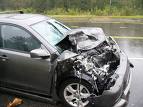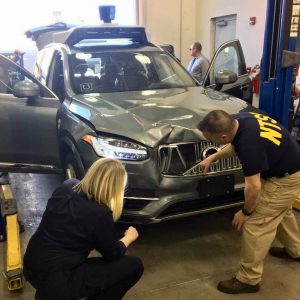As We Approach our Autonomous Future, Will Products Liability Law Hold Us Back or Shove Us Forward?
Arizona Appellate Court Revives Plaintiff’s Claim that Vehicle that Struck Her was Defective By Virtue of Not Including Autonomous Safety Feature
In recent years, highly autonomous vehicles have acquired a reputation as a technology that is perpetually just a few years away. Meanwhile, their  enormous promise continues to tantalize. AVs have the potential to transform American life in a variety of ways, reducing costs both large and small. From virtually eliminating the roughly 40,000 deaths and hundreds of thousands of injuries we suffer in car accidents every year to making it possible to commute to work while sleeping, AVs are seen as enormously promising.
enormous promise continues to tantalize. AVs have the potential to transform American life in a variety of ways, reducing costs both large and small. From virtually eliminating the roughly 40,000 deaths and hundreds of thousands of injuries we suffer in car accidents every year to making it possible to commute to work while sleeping, AVs are seen as enormously promising.
Against this backdrop, many torts scholars have expressed concern that imposing liability on AV manufacturers threatens to slow or even deter AV development. When AVs take the wheel, will the companies that make them also take on liability for whatever crashes they can’t avoid? AV development also raises the possibility—much less commonly noticed—of new liability for manufacturers of conventional vehicles. If AVs are significantly safer, will courts and juries come to see conventional vehicles as defective? According to a recent Arizona appellate court opinion, the answer is… maybe so.

 This Friday, January 24, 2020, hundreds of thousands of people will gather in Washington D.C. for the 47th annual March for Life. This year’s theme for the March for Life is “Pro-Life is Pro-Woman.” Last year’s March for Life invited additional news coverage thanks to a video that depicted Nick Sandmann, a high school student, smiling at a Native American elder as the elder beat a drum in front of the student. This initial video made it seem as if the student was mocking the elder. In the wake of this viral video and the news coverage that ensued, there was an immense backlash against the student and his high school. I recall seeing posts on social media listing the email addresses of the school’s administrators encouraging people to flood their inboxes with less than courteous emails expressing disapproval of their student’s behavior.
This Friday, January 24, 2020, hundreds of thousands of people will gather in Washington D.C. for the 47th annual March for Life. This year’s theme for the March for Life is “Pro-Life is Pro-Woman.” Last year’s March for Life invited additional news coverage thanks to a video that depicted Nick Sandmann, a high school student, smiling at a Native American elder as the elder beat a drum in front of the student. This initial video made it seem as if the student was mocking the elder. In the wake of this viral video and the news coverage that ensued, there was an immense backlash against the student and his high school. I recall seeing posts on social media listing the email addresses of the school’s administrators encouraging people to flood their inboxes with less than courteous emails expressing disapproval of their student’s behavior. NTSB’s Final Report on Pedestrian Fatality Involving an Uber AV Highlights Obvious Programming Missteps
NTSB’s Final Report on Pedestrian Fatality Involving an Uber AV Highlights Obvious Programming Missteps